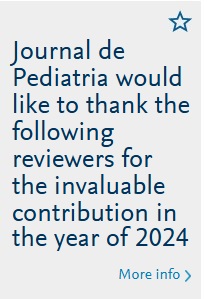The article in this edition of Jornal de Pediatria by Moraes et al. reports on the epidemiology of neonatal acute kidney injury (AKI) in a single center in Sao Paulo, Brazil over a 3-year period.1 The authors captured retrospective data on 155 very low birthweight neonates who met the inclusion /exclusion criteria. The most common reason for exclusion was having less than 2 serum creatinine (SCr) measurements, and death within the first postnatal week. Using the most contemporary neonatal AKI definition that uses a rise in SCr to diagnose AKI, they found that about 2 out of 5 met criteria had AKI, and noted several important differences between those with vs. without AKI. They found 2 independent risk factors of AKI (necrotizing enterocolitis and sepsis). Importantly, mortality differed greatly between those with AKI vs. without AKI (36% vs. 7%; p < 0.001). Those with AKI had over 4 times higher adjusted odds of death even after controlling for multiple potential confounders. In addition, those with AKI had a much higher independent duration of mechanical ventilation.
This study adds to the growing evidence that AKI is common and is associated with mortality in sick premature neonates across the world.2-5 AKI at the minimum alerts the clinician that there is poor organ perfusion/kidney damage. In addition, the work in animal models provides evidence that AKI is a systemic disease that affects distant organ function and suggests that AKI has a direct role in poor outcomes.6 Studies such as the one by Moraes et al. that provide evidence that AKI is associated with death even after controlling for potential confounders suggest that the kidney is not just an innocent by-standard in the disease process.
As the world of neonatology continues to push the barriers of viability and support more premature neonates, those caring for these vulnerable neonates need strategies and clinical pathways to deal with AKI and its sequelae. A consensus guideline and research agenda for pediatric AKI provide a framework for future care and investigation.7 This starts with identifying those at risk for AKI, developing reliable methods for diagnosis and a systematic approach to prevention of AKI in at risk patients. Then, strategies to treat AKI and its consequences can be implemented. For example, Stoops et al. has shown that mindful stewardship of nephrotoxic medication can reduce the rates of nephrotoxic-associated AKI.8 In critically ill children, pathways for risk assessment, biomarker stratification and intervention implementation can improve outcomes in at-risk children.9 Similar studies need to be performed in neonates to inform the clinician of the clinical pathways of care which can be used to improve outcomes.
One major challenge to our current approach is that not all AKI is the same. Many times, the etiology of AKI cannot be clearly known and/or is multifactorial. Clearly, the etiology of AKI should drive interventions designed to decrease the progression/treatment AKI. For example, neonates with low kidney perfusion (low fractional excretion of sodium, high urea/creatinine ratio, high specific gravity) will need evaluation for and treatment of poor cardiac function, low oncotic pressure, low intravascular volume, and/or high abdominal pressures. These neonates will need careful attention to fluid status to assure there is adequate intravascular volume to perfuse the kidney while avoiding extra-vasclar fluid accumulation.3 Alternatively, those with nephrotoxic associated AKI (who usually have non-oliguric AKI) need a watch and wait approach with careful attention to the adequate fluid provision of fluids to avoid dehydration that is common after nephrotoxic tubular injury. Obviously, the care for those with bladder outlet obstruction will differ. Systematic evaluation and care that addresses the underlying cause of AKI are paramount and bundles of care may help drive effective decision-making.
As we continue to learn more about neonatal AKI a collaborative spirit will be essential. Interactions between neonatology and nephrology are necessary at all levels. The Neonatal Kidney Collaborative (www.babykidney.org) continues to spread its wings under the idea that neonatologists and nephrologists must work together to improve kidney health in neonates with kidney disease. For this reason, all NKC projects and committees to date include members of both specialties. This type of collaboration is needed within hospitals in order to optimize guidelines and protocols designed to enhance care. Standardization of care (timing of evaluation, process/ bundles for care, timing of nephrology consultation) with input from both neonatal and nephrology mind frames are more likely to improve outcomes than strategies developed in silos. Research and educational initiatives are enhanced with a multi-disciplinary approach.
Finally, the work from Moraes et al. is important because it adds to the growing literature on neonatal nephrology from the perspective of a NICU in South America. Because different parts of the world have different populations, models of health care delivery, access to care, resources, and standards for pediatric nephrology and neonatology care, the epidemiology around the world may differ. Future collaborations that bring expertise from different regions are essential as we collectively work to reduce the global burden of kidney disease in these vulnerable neonates.
See paper by Moraes et al. in pages 228–34.









